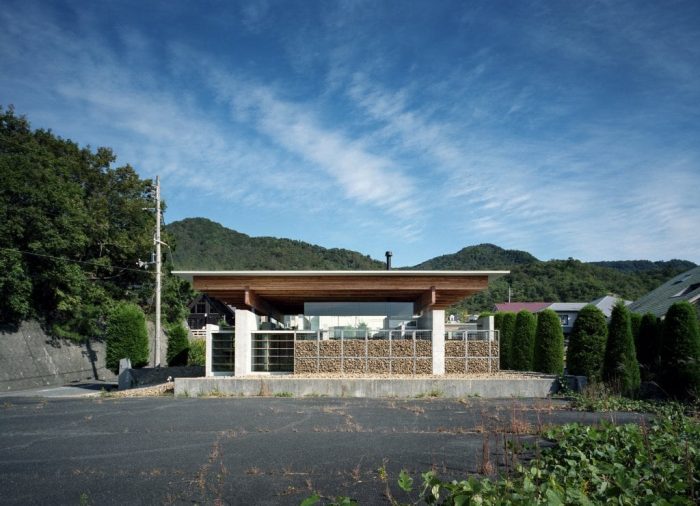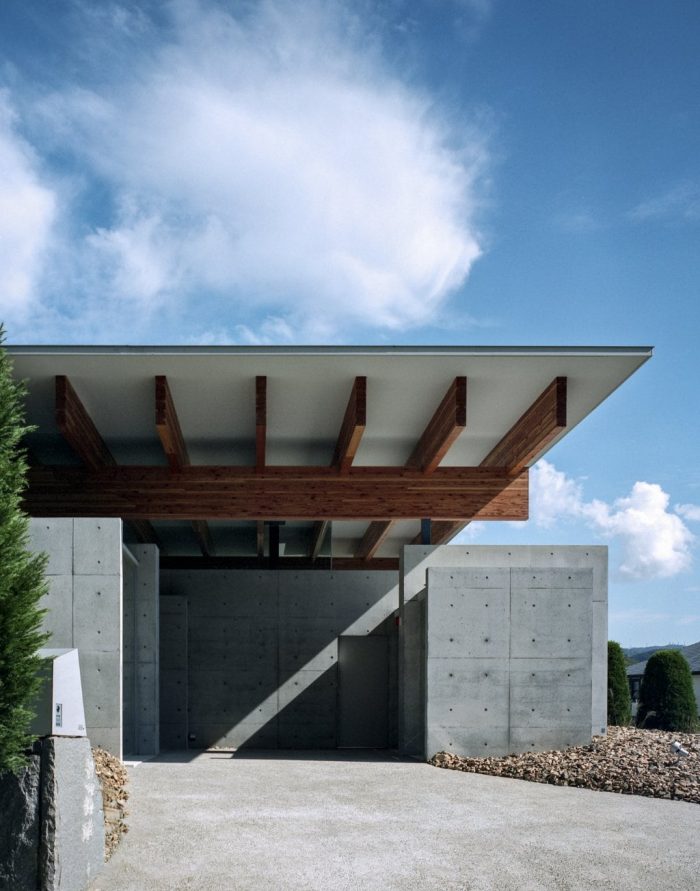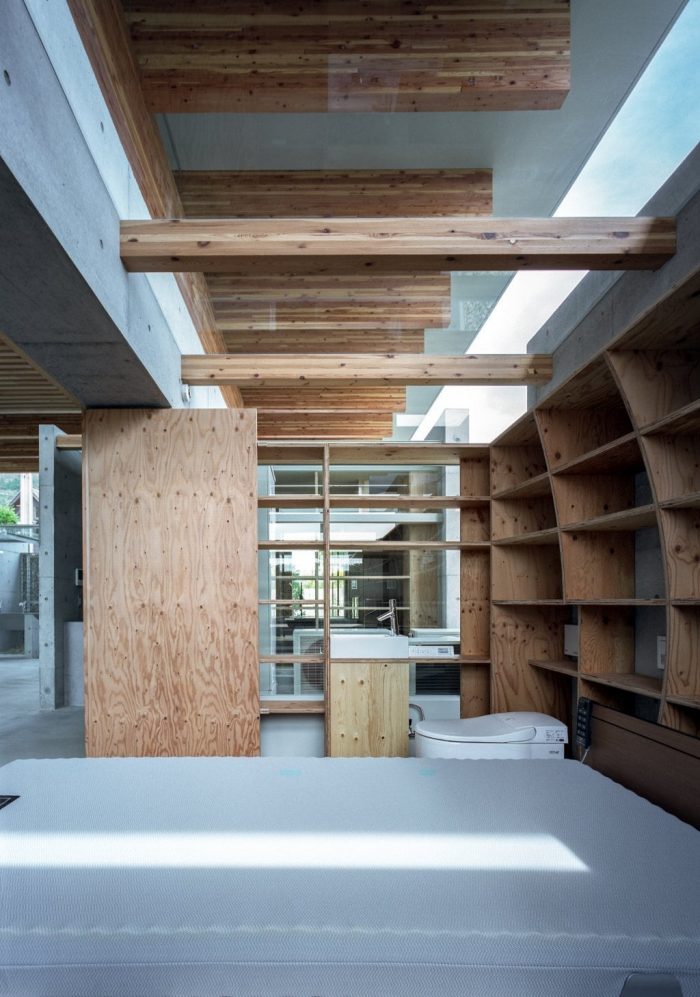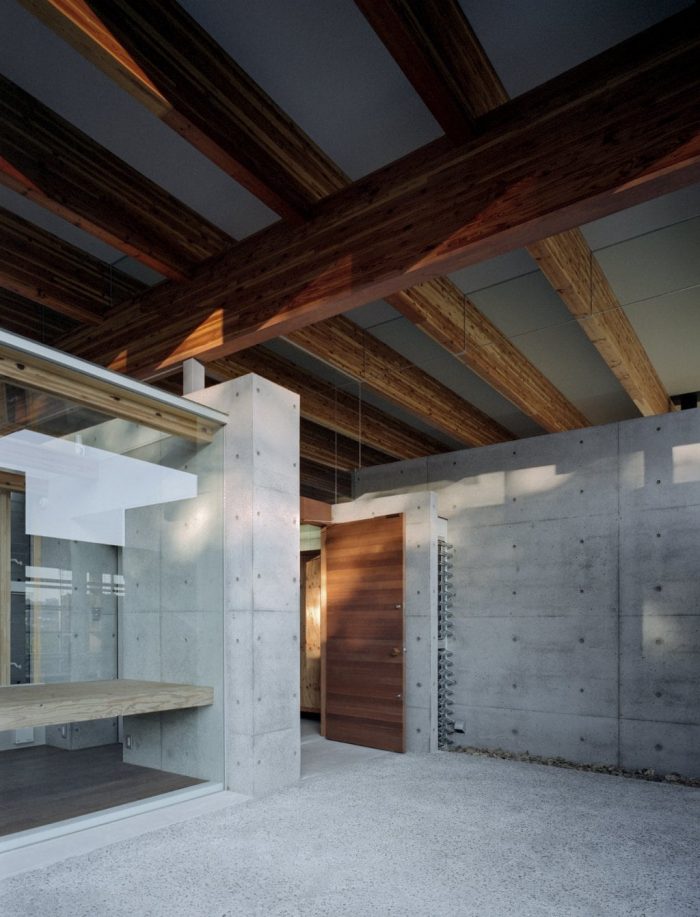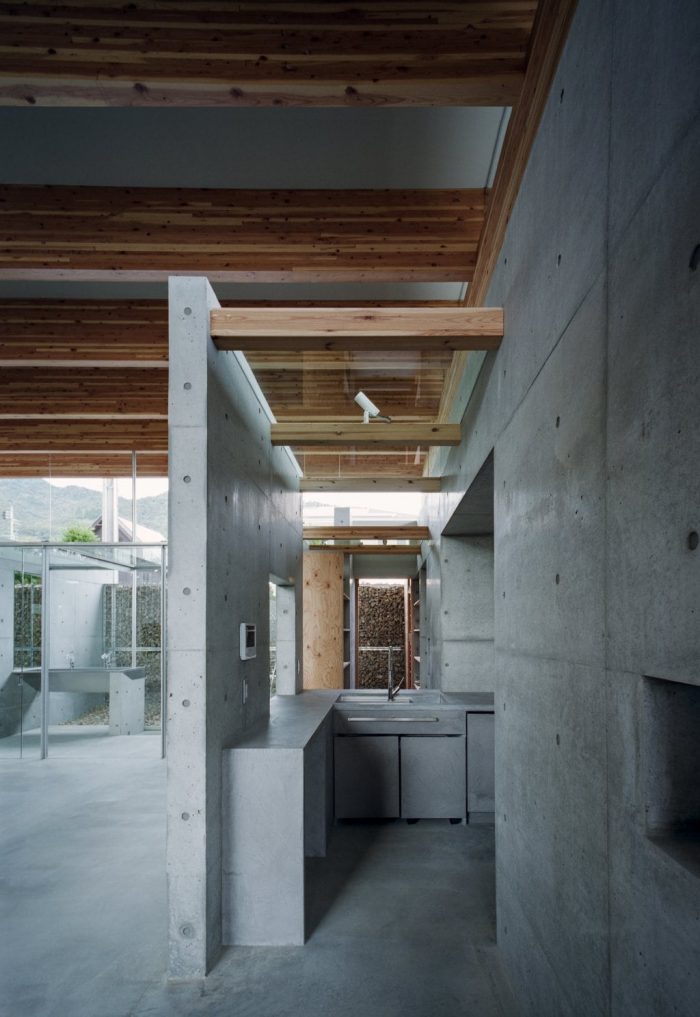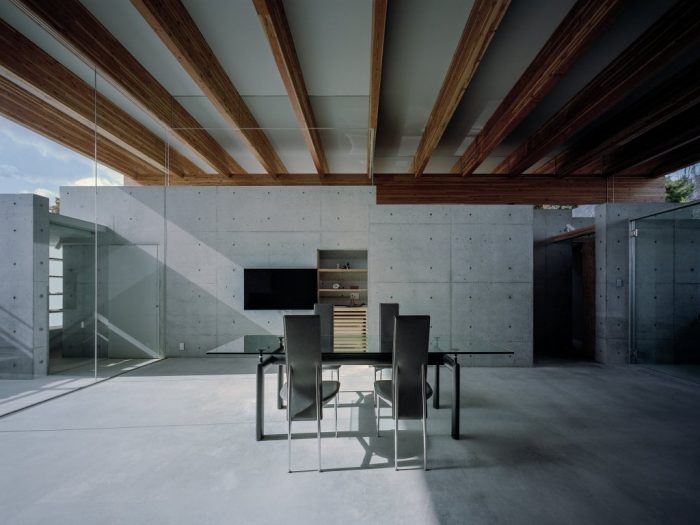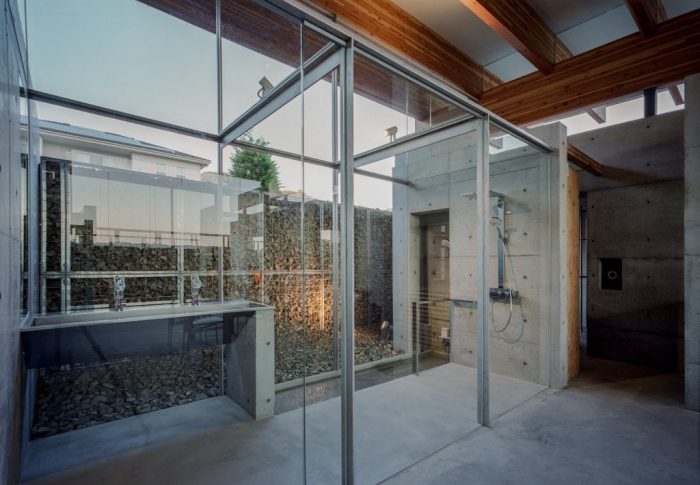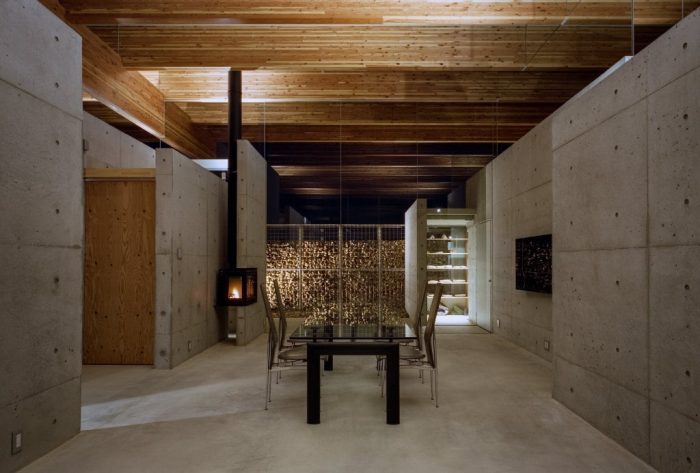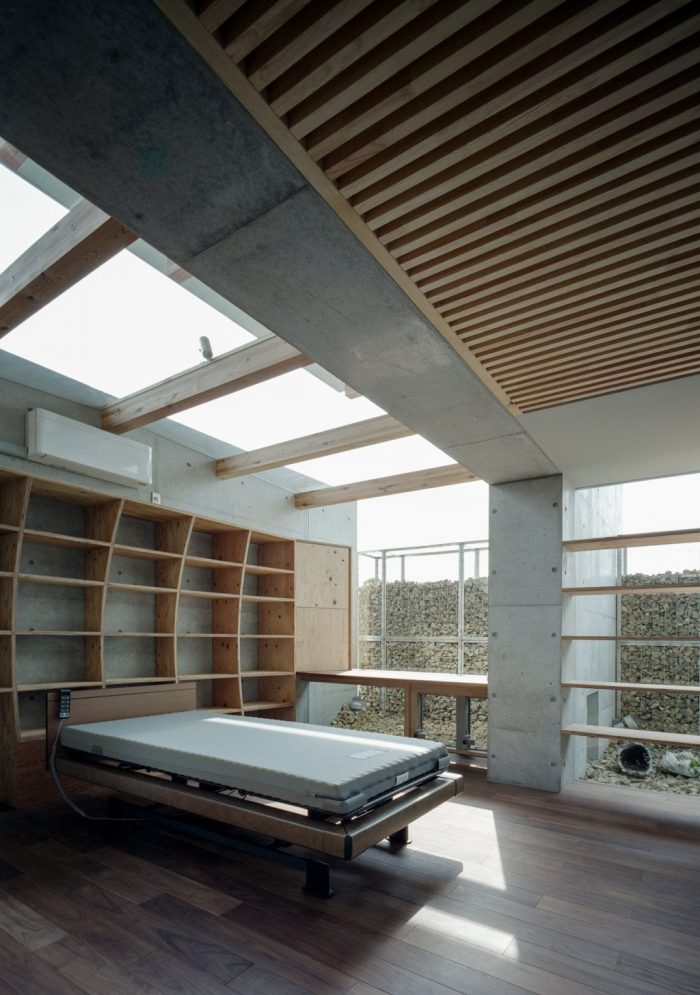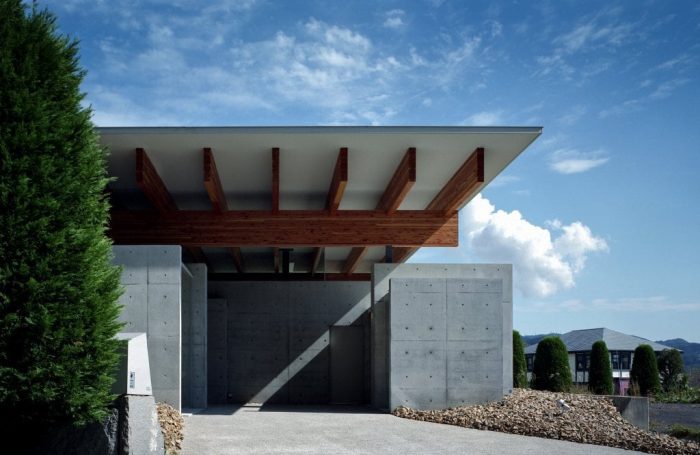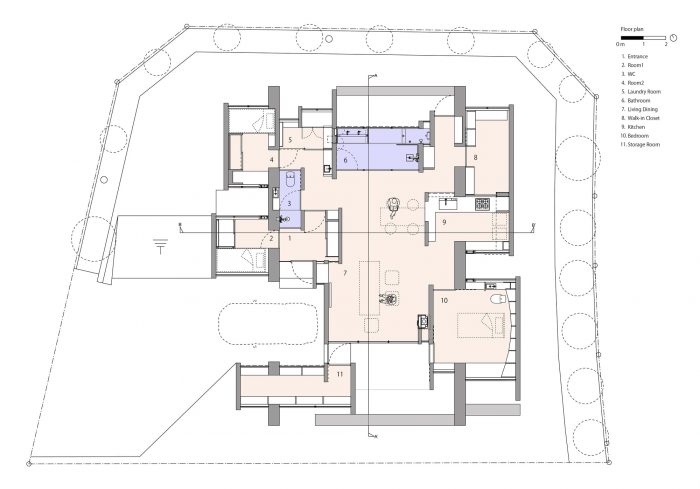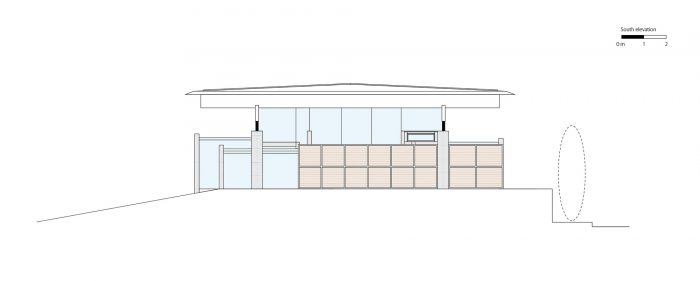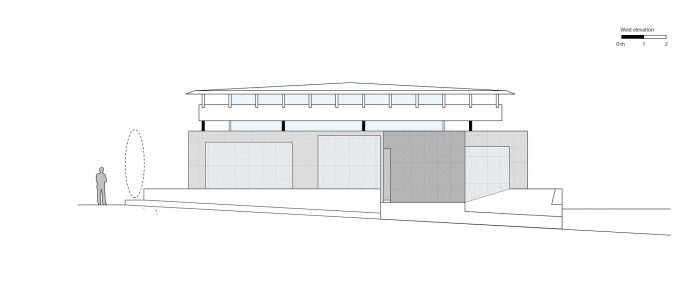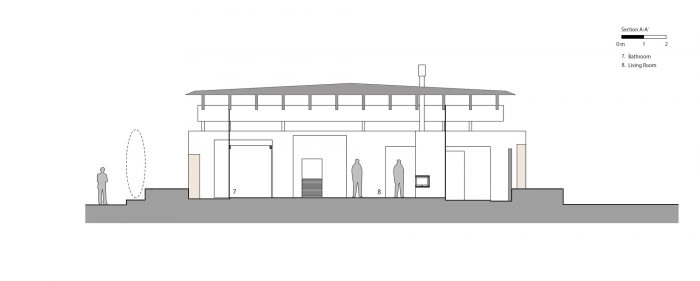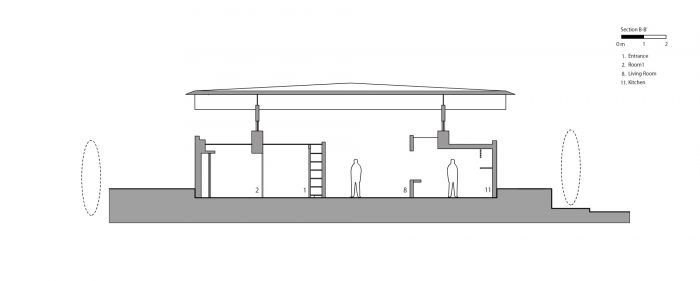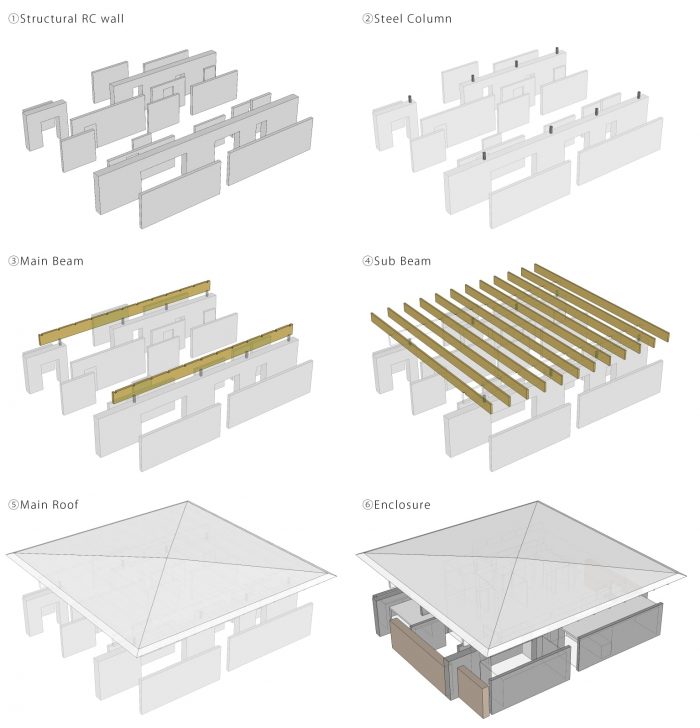客户要求将大型的开放空间和小型的、舒适的休闲空间结合起来,并通过立面差异或壁龛来划分。因为客户的妻子是残疾人,使用电动轮椅,所以设计一个多孔的布局也是非常重要的,使居民能够从房子的任何地方感觉到彼此的存在,这样她就可以自由地使用房子。
The client requested a combination of large, open spaces and small, cozier spaces for relaxing, delineated by elevation differences or niches. Because the client’s wife is disabled and uses an electric wheelchair, it was also essential to design a porous layout which enabled the residents to sense one another’s presence from any part of the house so that she could use it freely.
我们的概念是通过模棱两可的边界将大小空间连接起来,这样就可以根据居民的使用方式,将它们体验为小空间或大空间。
Our concept was to link small and large spaces via ambiguous boundaries so that they could be experienced either as small or large depending on how the residents used them.
为了实现这个概念,我们认为最好避免传统的分类,如 “客厅 “和 “走廊”,而是构建一个区域集合,其模糊的划分将使它们能够被解释为花时间的地方或流通路线。
To actualize this concept, we felt it would be optimal to avoid conventional categories such as “living room” and “hallway,” and instead construct a collection of areas whose ambiguous divisions would enable them to be interpreted as either places to spend time or circulation routes.
我们首先用一个大的主屋顶和墙壁粗略地标出了住宅。然后,我们用门、窗、橱柜、玻璃和木制屋顶和墙壁以及石笼网来控制光线、声音、空气、运动和视线的传递或阻挡,从而界定生活空间。
We began by roughly marking off the residence with a large main roof and walls. We then used enclosures constructed from doors, windows, cabinetry, glass and wood roofs and walls, and gabions to control the transmission or obstruction of light, sound, air, movement, and lines of sight, thereby defining the living space.
这些围墙阻挡了外面的视线,但保证了里面的视线。它们的设计是为了提供一种感觉,即无论你在生活空间的什么地方,你都在主屋顶之下,这导致了一种令人放心的感觉,即在一个大的、相互连接的空间内。
These enclosures block visibility from outside but ensure visibility from inside. They are designed to provide a sense that one is underneath the main roof no matter where in the living space one is, which leads to a reassuring feeling of being within a single large, interconnected space.
同时,由于主屋顶被暴露的钢柱吊在大型混凝土墙体之上,在屋顶和墙体之间的缝隙中露出了天空,因此室内有一种开放、不受限制的感觉。
At the same time, because the main roof is hoisted above the large concrete walls by exposed steel columns that reveal the sky in the gaps between roof and walls, the interior has an open, unrestricted feeling.
为了抑制传统空间类别的特征,我们使住宅的每一个元素都尽可能的抽象化。这强调了构成这些元素的材料,包括混凝土、钢、不锈钢、木材、胶合板、玻璃和石头。我们使用这些材料的原始状态作为室内装饰。
In order to suppress the characteristics of conventional spatial categories, we made each element of the residence as abstract as possible. This emphasized the materials that compose these elements, including concrete, steel, stainless steel, wood, plywood, glass, and stone. We used these materials in their raw state as interior finishes.
结果是,空间的抽象性和材料的物理存在相互衬托,创造了一个既低调又有深度的住宅。
As a result, the abstraction of the spaces and the physical presence of the materials set each other off, creating a residence that is both subdued and deeply atmospheric.
Architects: FujiwaraMuro Architects
Area : 171 m²
Year : 2018
Photographs :Katsuya. Taira
Manufacturers : Hansgrohe, Beal International s.a./n.v., Thermal Engineering Corporation
City:KŌBE
Country:Japan



